Nautilus Eco-Resort in Philippines, promising ‘zero-emissions, zero-waste and zero-poverty.’
Designed by Belgian architect Vincent Callebaut, Nautilus Eco-Resort “a biophilic learning center, facing the challenges of sustainable development.”
The Philippine seas are severely threatened. Over-fishing, mass tourism, massive pollution of plastic waste and toxic products, as well as climate change present real threats to the health of the archipelago and, of course, the survival of its inhabitants.
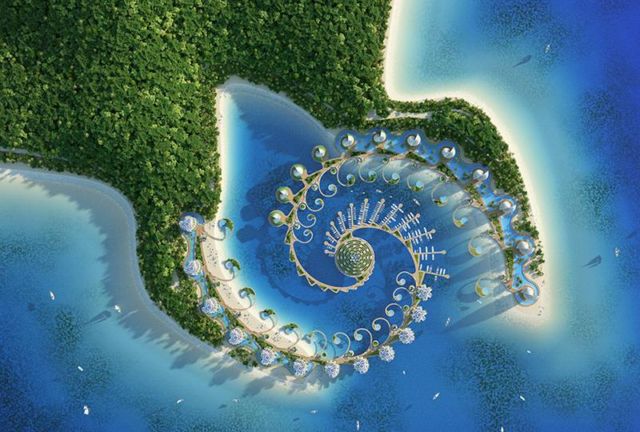
Corals are dying, mangrove areas are being destroyed, sea-grass beds are suffocated by erosion, and vital populations of fish and other marine species are declining dangerously.
Each architectural entity offers a specific experience:
• Rotating triskeles : To the East, 12 small spiral towers of varying heights invite travelers to live in apartments turning on their axis and following the course of the sun. Distributed in three branches, the 54 modules of three dwelling units fully rotate 360 degrees in one day. The 162 apartments offer exceptional views towards the landscape. The facades are adjusted surfaces integrating ramps to access the panoramic terraces. The central mat incorporates the vertical circulation and is covered with lush vegetation walls. At the top, a triskel roof also integrates solar tubes producing hot water and photovoltaic pergolas.
• Green shells : To the West, 12 small museum-hotels in the form of a sea snails seem to emerge out of the water. On the lower floors, there are exhibition spaces explaining in particular the environmental and socio-cultural challenges of the archipelago. A bio-cement structural moucharabieh is deployed in a three-dimensional spiral to cover the programmatic functions distributed in alcoves. This bio-cement incorporates microorganisms improving its performance by inducing the precipitation of calcium carbonates in recycled concrete, as does a real shell to form its exoskeleton. These 12-living nautiluses feature a self-stable shell covered with vegetable essences that are to be protected on the island. Their two openings form funnels and are closed by curtain walls, incorporating silicon cells in imposts and green balconies in cascades.
• Petals and corals : Punctuating the two-large golden spiral quays, small pavilions with organic and quasi-maternal shapes invite ecotourists to rest and relax along the water. The “petals” are covered with a vegetated hyperbolic roof while the shape of the “corals” is inspired by an Enneper triple surface, spiraling to erase any boundary between the inside and the outside. From each of their 22 pavilions, scientists have access to the fish and coral reef ponds in order to reintegrate endangered wildlife and plant life.
source Vincent Callebaut

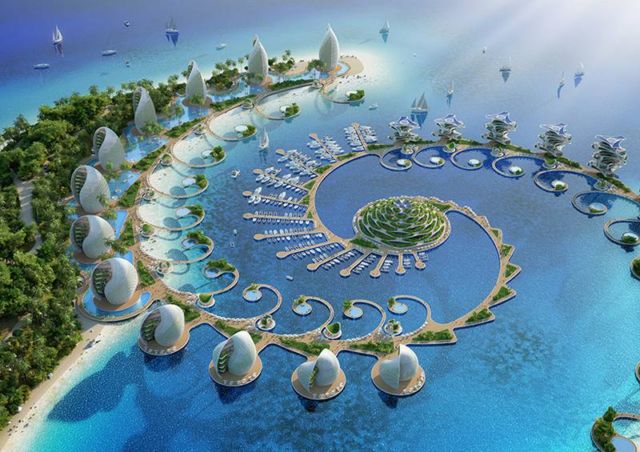
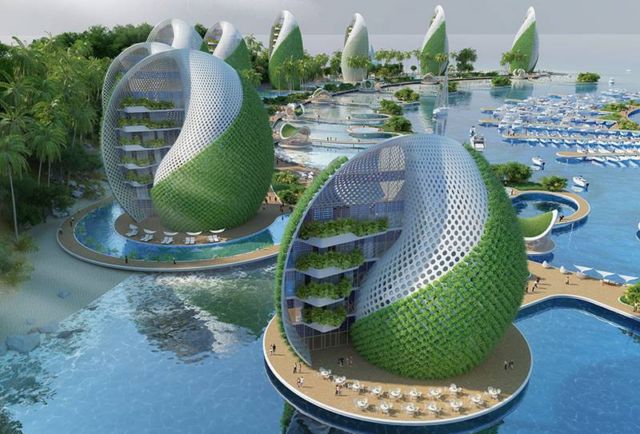
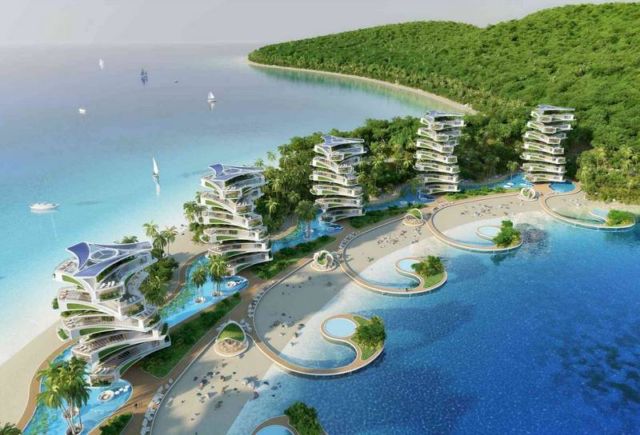
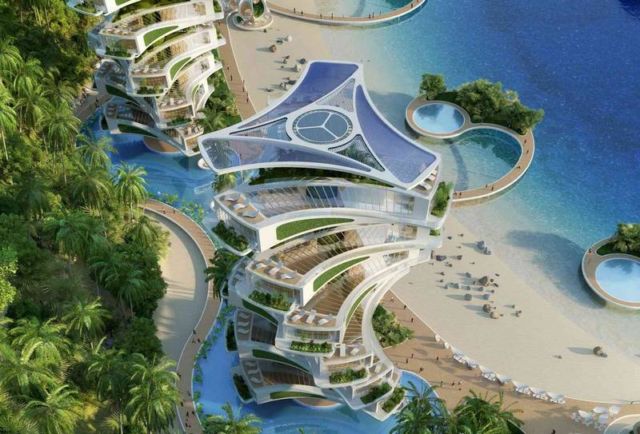
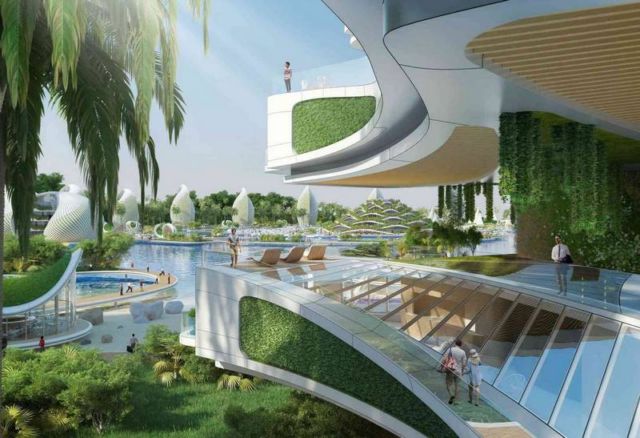
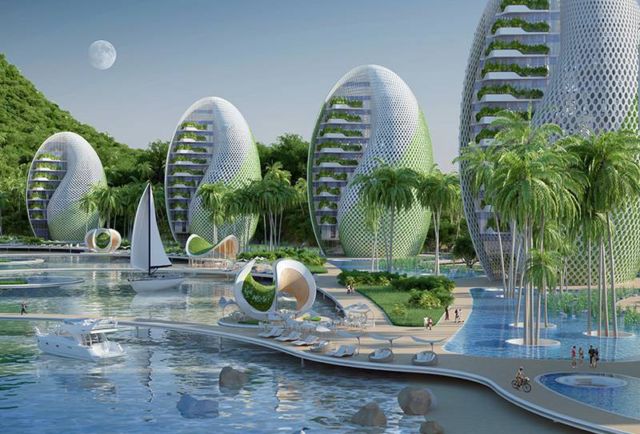
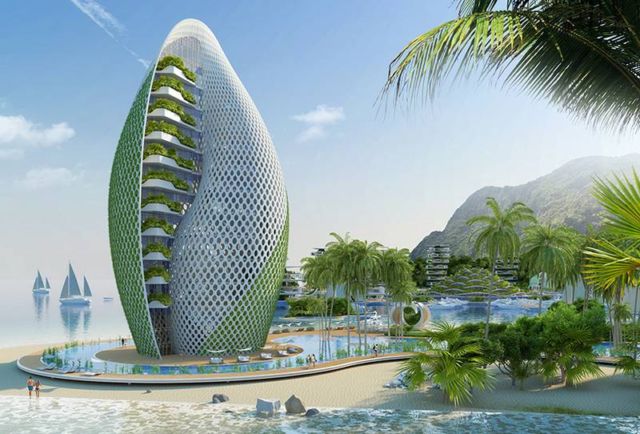
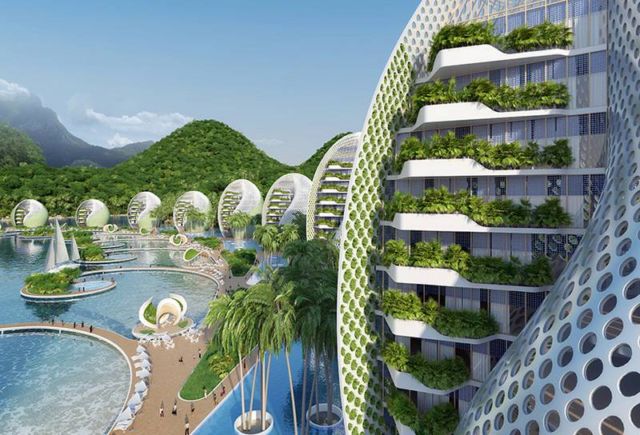
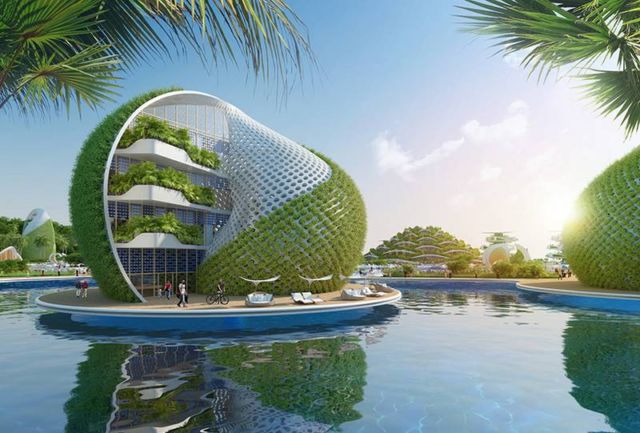
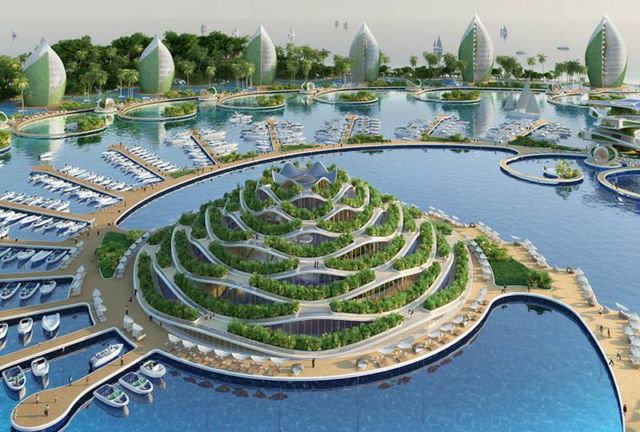
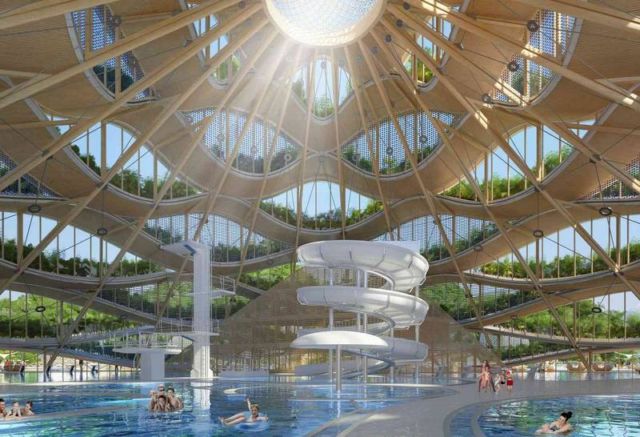
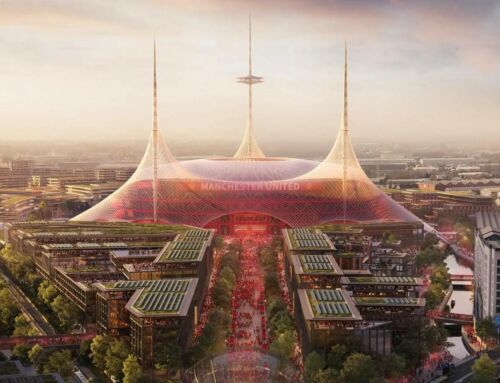


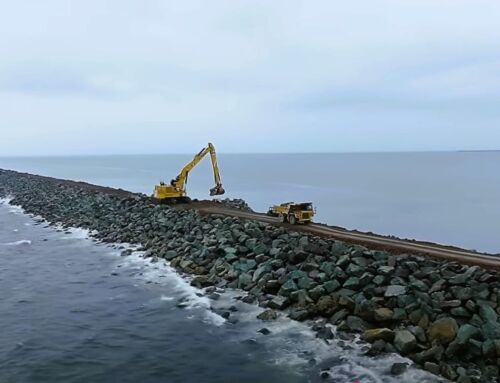
Leave A Comment